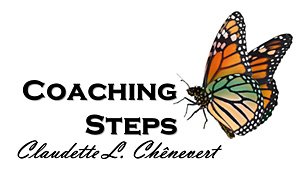...or Hanukkah or Kwanzaa? The only way to trim holiday angst is to make new traditions and keep some old.
By Elizabeth Einstein
(This article is re-printed from reMarriage magazine, Fall 08.)
Shortly after the long-needled spruce went up in the family room, the trouble began. The holiday tree was anchored in its stand, but stood bare for several days. Opinions on decorating styles, it seemed, were anchored as well, along traditional family lines. As the arguments swirled over tree decorations, they spilled over into what was the perfect time to open gifts: Christmas Eve or Christmas morning?
What a start to this stepfamily’s first Christmas together! Robert and Liz had married in late fall, and now, just weeks after settling into a new house, the holidays were upon them. He was widowed with four children under 12; she was divorced with two teenage daughters. Although everyone seemed excited about the new family they were building, the stress created from so many changes was mounting.
Now they were staring straight at their differences, about how holidays were to be celebrated—and especially how a decorated tree was supposed to look. In a Solomon-like moment, the family decided to divide the tree into two sections, with each group doing their “traditional” things.
That first stepfamily holiday decision became a family legend that still elicits laughter every time they tell it. Over the years, as they began to feel more like a family, all the members made a commitment to compromise. Rather than a his and hers concoction, this stepfamily created their first ours tree—complete with all the sentimental items and new acquisitions.
Because Robert’s older two children remained tied to stringing popcorn and cranberries and his younger ones insisted on making colorful paper chains as they always had, those old-fashioned decorations festooned their side, Liz and her daughters wouldn’t hear of not using the beautiful ornaments they had collected from their travels. Each shiny globe evoked happy memories for them. And a new tradition emerged: selecting that one special ornament during a family vacation. Because the children had to negotiate which one to buy, their compromises reflected forward steps on their stepfamily journey.
Skirting Holiday Landmines
Memories and traditions are important to all families, but when holidays arrive, remarried families start with several strikes against them. Roots are fragile. Happy memories are fading. Stepfamily members share no common history. Individual traditions may differ vastly and people cling to them for what they represent; giving them up feels like yet another loss. The most important thing is to meet them head on. Acknowledge up front that things are going to be different.
Robert and Liz’s tale is repeated in remarried families everywhere; only the scenarios differ. Add a multi-ethnic remarriage and the learning curve grows. Aunt Nina always expects to have the first night of Hanukkah. Are the stockings hung or laid on the hearth? Where will the Kwanzaa celebration happen? Will Mom let us borrow the unity up (Kikombe cha Umoja) or should we get a new one? Whether adopting a new appreciation for the traditional African celebration of values or celebrating a totally new holiday, each scenario asks the question: What will our new stepfamily values be?
-
The holiday itself. Christmas or Hanukkah? Kwanzaa or Christmas? Both?
-
The Christmas tree. Live or artificial? Cut down, buy one to plant after the holiday, or return to a favorite corner stand?
-
Decorations. New modern menorah or family heirloom? Handmade tablecloth from your grandmom or mine?
-
Dress. Dressy or casual?
-
Food. “What do you mean we’re having turkey? My mom always makes ham decorated with cherries!”
-
Gift and gift-giving. One special expensive item or many smaller gifts? Give to each other or to charity? When do presents get opened? Robert’s younger children always awoke to presents in the morning after Santa’s delivery; Liz’s daughters liked a Christmas Eve ritual so they could sleep in late. Their compromise was opening packages that the mail carrier had delivered in the evening, with Santa’s and the rest on Christmas morning.
Solutions and compromises are there, but working out differences takes advance planning and time. Waiting to open boxes of “his” and “hers” ornaments until it’s time to trim the tree is courting trouble.
Long before the holidays arrive, begin talking about how things were done in former families—and why. “We always used that menorah because it once belonged to our great grandmother in Germany.” Perhaps the decision to get the dreaded artificial tree makes sense when the other side understands it as a green statement—“to save real trees.” Discussions about the emotions behind a tradition can start family members thinking about creative compromises. Sharing traditions, including the ones that still hold warm memories, motivates family members to become more sensitive to each others’ ways and needs. There is no “right” or “wrong,” just raw emotions and long-held beliefs. When it comes to traditions, judging the other way as “wrong” only hurts feelings and hinders stepfamily bonding.
It’s surprising to realize that traditions sometimes are repeated when, in reality, they lost their significance long ago. It might not be so bad to start some new ones.
Visitation Revisited
Pressures are never higher than when discussing who gets the kids during the key holiday moments, whether it’s the annual seder or the Easter Egg hunt. And nowhere does communication become more critical than when clarifying visitation schedules during these supposedly “happy” times.
The already complex family situation is multiplied with remarriage, with stepdads and ex-wives and multiple grandparents all wanting a piece of the action. Imagine this difficult scenario for young children. After sharing Christmas Eve with their mother, Fred awakens his children early because he’s booked them into five 2-hour visits: breakfast at Grandma Helen’s, snack and gifts at Aunt Betty’s, Christmas dinner at Grandma and Grandpa Ellstrom’s house, late afternoon with Fred’s mom before going to supper at Aunt Sarah’s. Is it any surprise that the children are cranky and tired before they even get to the last grandma’s house? By that point, they don’t even care about more presents and have no idea who gave them what loot. They whine and want to go home. All that chaos and they haven’t even had their own stepfamily celebration yet!
Because holidays are emotionally charged, too often what is meant to be a joyful time becomes more terrible than terrific. A better stress-reducing solution would be to plan several celebrations so everyone can truly enjoy each special time. Because December 25 is merely a calendar date, stretching out the festivities can make them more meaningful to everyone.
Although children of divorce deal with many challenges, they aren’t unhappy about all the extra holiday dinners, presents, and attention they get from their new extended family, say researchers. According to the University of Pennsylvania’s Professor Frank F. Furstenberg, Jr., who studied the effects of the extended family on the stepfamily, the key is how well adults handle the situation. Resolving differences with their former spouses and refusing to use the children to settle differences mirror what’s possible in stepfamily living.
Sure, you might have to cook an additional turkey or take another day off, but keeping schedules simple is the secret to a successful holiday.
Looking for Enriching Times
As youngsters travel great distances to be with their other parent, holiday success rests with the adults in both households.
At one end, the children need to be prepared. Acknowledge their feelings and let them know you feel good that they can be with their other parent. Keep any sadness you feel to yourself.
The receiving parent needs to help the children feel comfortable with the transition during this sensitive time. Remember that some children—especially teenagers—would rather be with familiar friends and surroundings. Get them involved in the new experience; avoid treating the kids who don’t live with you year-round as guests. “Hey, Alex, your dad tells me you make great popcorn balls. Would you do that for us while you’re here?” Giving them small responsibilities can make them feel a part of creating the holiday, too—and more a part of your household.
Holidays can be an enriching time for children of remarriage. As youths move between two families, and many travel to new places, stepchildren may meet new people and gain new experiences. Teenager Jenifer says she likes going to her dad’s place in St. John’s the day after Christmas with her dad and stepmother. “It’s cool because one day I am out cross-country skiing with my brothers in New York and the next afternoon I’m out sailing with my dad in the Virgin Islands.” Like Jenifer, who adapted to not being with her mother the entire Christmas week, children can learn to become more adaptable and flexible.
More role models from a greater extended family offer new beliefs, attitudes, and skills. Jenifer’s father recalls how his own creative father loved to paint but couldn’t nail a bird house together. His stepfather’s hobby involved sailing and woodworking. “Learning all that from him led me to become a carpenter and to living on a sailboat. It’s great to have a spare dad,” he says.
For most of us, the holidays are a time of expectations. Unmet ones account for much of the disappointment, sadness, and postholiday depression that people in all families experience. An emphasis on planning ahead and creating realistic holiday expectations will prepare remarried families to receive the gifts the holidays offer. When hopes and dreams are balanced with reality, a joyful exchange of sharing old traditions while making new ones can provide a festive foundation for the stepfamily’s future. And it just might skirt some of those holiday landmines.
Elizabeth Einstein, LMFT, is a nationally known marriage and family therapist. An award-winning author and coauthor of a new teach-out-of the box program, Active Parenting for Stepfamilies, she trains professionals to work more effectively with stepfamilies. She lives in Ithaca, New York.



 This is not your mother’s second wedding! Getting married again? Wondering why the planning is harder than you thought it was going to be? Enter to win a copy of Eat, Drink and Remarry by Stacey Tucker!
This is not your mother’s second wedding! Getting married again? Wondering why the planning is harder than you thought it was going to be? Enter to win a copy of Eat, Drink and Remarry by Stacey Tucker!


Comments